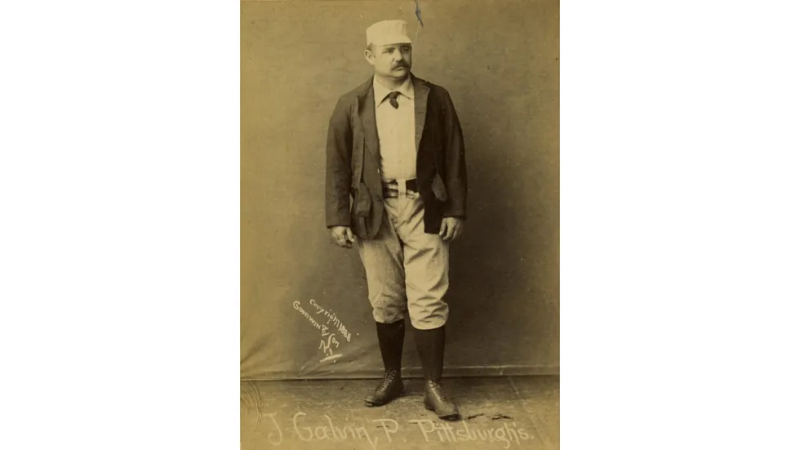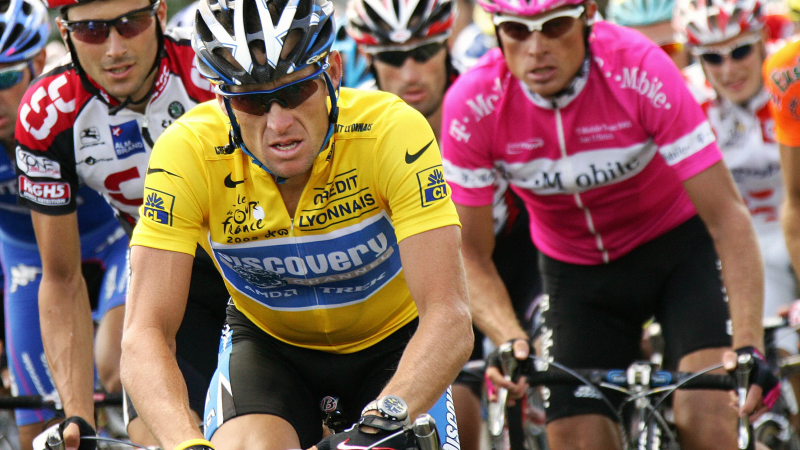Baseball's first cheater? The story of James 'Pud' Galvin and testicular fluid
In the summer of 1889, pitcher James "Pud" Galvin participated in a medical test at a college in Pittsburgh.
According to The Washington Post, the mustachioed right-hander received an injection of "the Brown-Séquard elixir" − a concoction of testicular fluid from dogs and guinea pigs that was being touted at the time as the "elixir of life." Galvin proceeded to pitch a two-hit shutout in a win over the Boston Beaneaters the next day.
"If there still be doubting Thomases who concede no virtue to the elixir, they are respectfully referred to Galvin's record in (the) Boston-Pittsburgh game," the newspaper reported on Aug. 14, 1889. "It is the best proof yet furnished of the value of the discovery."
More than a century later, Northeastern law professor Roger Abrams referenced this report in his 2007 book "The Dark Side of the Diamond: Gambling, Violence, Drugs and Alcoholism in the National Pastime." He referred to Galvin's dose of the Brown-Séquard elixir as the first known instance of doping in baseball − making Galvin, who was inducted into the Baseball Hall of Fame in 1965, the sport's first known doper.

Though there are lingering questions about whether the 5-foot-8, 190-pound pitcher deserves that informal title, and the fact that there was no rule prohibiting the injection at the time, it indicates that baseball players were looking for performance-enhancing substances roughly 106 years before the dawn of Major League Baseball's steroid era.
HOT STOVE UPDATES: MLB free agency: Ranking and tracking the top players available.
It's also a fascinating footnote to Galvin's career, which was among the most dominant of the 19th century.
Supposedly nicknamed "Pud" because of his ability to turn opposing hitters into metaphorical pudding, Galvin pitched for 16 years in four leagues, drawing acclaim for his durability and an incredible pick-off move. According to The Society for American Baseball Research, he was the first pitcher to reach 300 career wins and the first to throw a perfect game. (Unfortunately, SABR added, these accomplishments came "before the existence of the term 'perfect game,' and in an age that had no sense of the meaning of 300 career victories.")
By 1889, Galvin was 32 and starting to fade with the middling Pittsburgh Alleghenys. In the preceding three years, he had pitched more than 1,300 innings, including an unconscionable 145 complete games.
It was around this time that physiologist Charles-Édouard Brown-Séquard was trumpeting the effects of his new elixir, which he said could improve mental focus, physical strength and sexual prowess. His proof? For three weeks, Brown-Séquard, then 72, had injected the substance himself. He wrote that he felt more energized than he had in years and was able to lift heavier items.
Some newspapers bought the hype, touting the Brown-Séquard elixir to their readers as the "medicine of the future." They published comical stories of men who felt its effects almost immediately − walking into a test on crutches, for example, and then being able to leave an hour later without them. But over time, it was proven to be a fake.
Scientific studies showed that the amounts of testosterone in the elixir were far too small to have a biological effect, and any apparent benefits stemmed from the placebo effect.
This, of course, begs questions about Galvin, who died of stomach illness in 1902, at 45. If the Brown-Séquard elixir didn't work, should it really be considered doping? And if ingesting this substance wasn't against baseball's rules at the time, should Galvin even warrant mention as a doper?
Those questions are ultimately for history to decide. What's clear, however, is that performance-enhancing drug use in baseball predates the steroid era by more than a century − to the time of mustachioed pitchers and elixirs made of guinea pigs' testicular fluid, one of many strange chapters in the sport's long history.
Contributing: Cesar Brioso
Contact Tom Schad at tschad@usatoday.com or on social media @Tom_Schad.

Disclaimer: The copyright of this article belongs to the original author. Reposting this article is solely for the purpose of information dissemination and does not constitute any investment advice. If there is any infringement, please contact us immediately. We will make corrections or deletions as necessary. Thank you.







